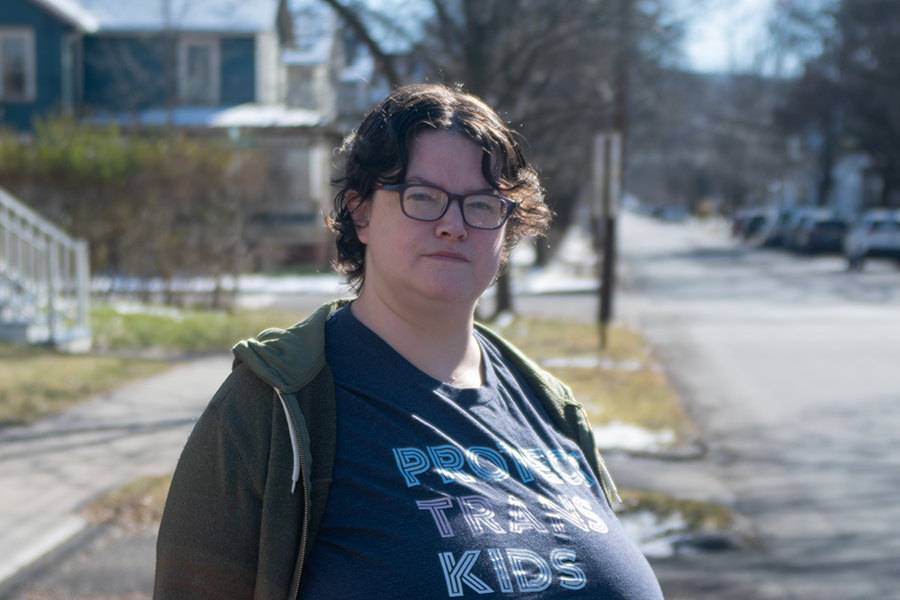Tenants hold most seats on Ithaca’s 2024 Common Council, which is the primary form of local government in the area. It is the first time this has happened in the City of Ithaca, where more than 70% of the population are renters.
Fourth Ward Alderperson Tiffany Kumar is one of the council members who is a tenant. Kumar said that having a more representative council translates into local governance that better serves the working class.
“I think that it is more representative of the actual demographics … [and there is] a lot to push back against this tradition of politics and government kind of [being] run by those who are in more fortunate groups,” Kumar said.
Kumar said the council’s tenant majority can lead to solutions for renter-centric problems, like their concerns over added flood insurance costs they might have to incur after preliminary drafts of Ithaca’s revised flood maps were released in 2022.
Flood maps and added cost of flood insurance
The flood maps, which were last revised by the Federal Emergency Management Agency in 1981, categorize the town into different types of “Flood Zones” based on their probability of flooding.
If an individual’s property is located in Special Flood Area Hazards — or areas that possess a high risk of flooding — and if they have a mortgage backed by the government, they would have to buy flood Insurance.
In Ithaca, certain areas like those surrounding Buttermilk Falls, Six Mile Creek and Fall Creek are in Special Flood Hazard Areas.
The Ithaca Voice reported on Feb. 16 that the process of municipal review for flood costs has commenced and individuals have until May 1 to appeal mistakes in the suggested maps. There is no firm date for the release of finalized maps, but they will be implemented at some point in 2024, according to FEMA.
Katie Sims, co-chair of the Ithaca Tenants Union, said that in situations like these, tenants are usually the ones directly impacted.
“Renters bear the additional cost because usually when costs are raised, landlords often pass it on to tenants,” Sims said. “That’s typically how it works.”
Flood insurance can be bought through the National Flood Insurance Program and typically costs around $850 but can vary depending on different features of the property the insurance is being bought for and flood insurance providers.
Caroline Feindel ’09 is a renter in Ithaca who lives in Fall Creek, a Special Flood Hazard Area that warrants flood insurance for the property. Feindel said that having flood insurance is important, even though it may not seem like it.
“We do live in a valley,” Feindel said. “We are on the edge of a lake. I don’t think a lot of people in this town realize just how easily a flood could happen in … the lower parts of Ithaca.”
Feindel said she has not received communication from her landlord about the added cost of flood insurance, but if she does, she would not want to pay for it completely out of pocket.
Kumar said the common council, especially one with a tenant majority, should find a solution to prevent tenants from bearing the additional cost.
“It is a common council responsibility to make sure that the cost of climate change [doesn’t] offset our most marginalized communities,” Kumar said. “I also think that the fact that we have a majority [on the] council speaks to the fact that not only was there a council with the willingness to, but also there’s an electorate’s beliefs to hold us accountable to providing for tenants’ rights.”
Flood insurance and gentrification in the Southside Neighborhood
Surrounding Fall Creek, where Feindel lives, is Southside. Southside is a historically Black neighborhood that has existed for over 150 years. According to an article by The Nation, the new flood maps could catalyze the gentrification in the area by displacing those who cannot bear the cost of the added flood insurance.
Chavon Bunch, executive director of the Southside Community Center, said the added cost of flood insurance can add up along with other costs like taxes.
“Some of the elderly people in the neighborhood are holding on to their houses by the skin of their teeth,” Bunch said. “Having to pay extra insurance is going to be tough, especially if you’re paying already $4,000. And then on the high end, the flood insurance I think is between $4,000 and $5,000.”
Cornell University Senior Meher Bhatia, science editor of the Cornell Daily Sun, wrote the article for The Nation. Bhatia said the added flood insurance cost adds a burden to underrepresented renters.
“From everyone that I’ve spoken to, this is obviously a very, very real problem that is affecting the most marginalized and vulnerable communities,” Bhatia said. “And there’s no genuine solution that will help these people in time.”
In December 2023, Ithaca won an $800,000 grant from FEMA to create flood control measures — like flood walls — along Six Mile, Cascadilla and Fall Creek. Once the development of these flood control measures concludes, the flood maps will need revisions again.
Bhatia said flood control measures could mean no added flood insurance costs for residents. However, the flood control measures projects will take more than three years to complete.
“There’s just this gap of time where people are going to be required to pay for insurance,” Bhatia said. “And as of right now, I haven’t heard or seen any solutions that would directly help solve that issue. The flood wall solution is a much longer-term solution. But from the reporting that I’ve done on this issue, [it] needs an immediate solution.”
Bunch said it is unavoidable for people to be displaced. However, since they are being displaced, Bunch said the county should be responsible for offering them incentives like better transportation facilities if their place of residence differs from their workplace location.
“It’s bound to happen,” Bunch said. “[People] just aren’t going to be able to afford to live downtown. So give them an incentive to go out [into other parts of the county]. They don’t have a car? [The county should] buy a car, right?”
Ithaca’s history with rent stabilization and the economics of the housing market
In the long term, however, Sims said that opting into the Emergency Tenant Protection Act (ETPA) might help with the overall issue of incessantly rising rents.
ETPA places caps on rent increments, hence establishing rent stabilization. Many current Common Council members, like Phoebe Brown, Kayla Matos and Kumar, ran on an ETPA platform. In March 2023, the Common Council passed a resolution expressing support for the ETPA but has not yet opted into the act.
“We think ETPA is a really great policy and we’ve seen a really big shift in the past couple of years about it,” Sims said. “We’re hoping that it does come up for a vote in the next couple years in Ithaca and … we think that if everyone follows through on their campaign promises that it should pass.”
Good Cause Eviction is another bill that has been a topic of discussion since before COVID-19. Good Cause Eviction, or the Right to Renew Leases, essentially prevents landlords from evicting tenants without a “good cause” — like lease violations and untimely rent payment — hence shifting power back to renters.
Kayla Lane, secretary on the Landowners Association of Tompkins County (LATC) board of trustees, said that while Good Cause Eviction seems like an equitable idea, it does have adverse impacts on property owners that might in turn impact the overall housing market in the area.
The cost of rentals in Ithaca is high at the moment because the demand for housing exceeds the supply. Lane said rent stabilization would artificially lower the supply because of the personal decisions of landowners, which would reinforce the original problem: demand exceeding supply, which leads to high prices.
“You could then have a property owner say instead of … [having] tenancy for an unspecified amount of time, [they would] rather just accept that [they] have a vacant unit, not rent it out or maybe keep … it vacant longer,” Lane said.
Lane said that even though rent stabilization measures do not exist in Ithaca, behavior trends of renters do tend to place a ceiling on rent prices.
“I could put a studio apartment in Dryden for $1,300 a month and I guarantee nobody is going to contact me about it,” Lane said. “So there is still that supply and demand or what the market would … allow for rent levels.”
Kumar said that before the Common Council meeting scheduled for March, the council will meet for a legislative retreat where they will establish what goals they specifically want to focus on during the year.
“What our deliberations are going to [look like at the legislative retreat will] be extremely instrumental in terms of deciding what the rest of the year is going to look like,” Kumar said. “ETPA is the number one priority for me. I’m definitely going in with that in mind.”
Editor’s note: A previous version of this article said Jorge DeFendini was a current Common Council member. This has been corrected to accurately reflect that DeFendini is not a current Common Council member.















